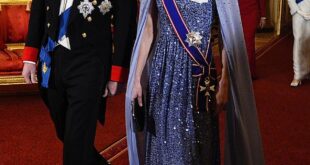Billionaire Elon Musk rebranded Twitter this week, replacing the iconic blue bird logo with a black X in his latest attempt to overhaul the social media giant.
The redesign is consistent with Musk’s plans to build an “everything” platform – like China’s WeChat or PayTm in India – as he encouraged users to rethink the “overall concept” of the app formerly known as Twitter.
On July 24, the Tesla founder tweeted an image of the new logo placed on the Twitter headquarters in San Francisco. Workers were seen removing the bird logo that has marked the platform since its launch in 2006. Musk also redirected the site to x.com to twitter.com and announced that Twitter will soon only be available in dark mode.
However, the rollout didn’t go entirely smoothly, as it later emerged that Twitter had failed to obtain the necessary approvals to change the building’s signage. Brand experts also warned that Musk’s use of
The website was reportedly blocked in Indonesia under local online pornography and gambling laws after Mr Musk revealed the X logo. User reactions were also mixed.
“The X logo looks like it’s for one of those ridiculous, fragile manhood subscription box services that would send you like an axe, a bottle of hot sauce, small amounts of coffee, and some beard oil every month in 2019” , read a tweet – or so it’s an X.
As Twitter enters a new era after a controversial makeover, we look back at seven marketing failures:
Royal Mail to Consignia
In 2001, the Royal Mail was renamed Consignia, but this did not last long.
“The new name describes the full scope of what the Post Office does in a way that the words ‘post office’ and ‘office’ cannot,” revealed then Royal Mail chief John Roberts Results of a £2million rebranding, adding: “The name ‘modern, meaningful and totally appropriate’ suited the company’s ambitions to become an international postal operator.
The public didn’t like it and just 16 months later Consignia was renamed Royal Mail plc, undoing one of the most disastrous rebranding moves in recent history.
The strategist who led the Consignia renaming later defended it in an interview with the BBC, explaining why the name was chosen.
Keith Wells, director of Dragon Brands, said: “There’s merchandise in there. It has something to do with insignia, so you have something like royalty in mind. And there’s this nice dictionary definition of “consign” which means entrust to the care. That goes straight to maintaining the trust, which was very important.”
From Coke to New Coke
New Coke has been described as “round but bold…a more harmonious taste”.
“New Coke” remains the benchmark for poor product launches, nearly 40 years after the Coca-Cola company infamously decided to change its secret recipe during the ’80s Coke Wars to give itself a competitive edge over the nascent Pepsi Co.
The decision fell through as avid cola drinkers were devastated by the drink’s new taste and even launched grassroots campaigns across the United States to bring back the old cola.
“It was the people against the corporation — only in America,” said Bob Simon, CBS News reporter, in 1985. “Coke said it was done, and so were the people.” In California they were collecting signatures, in Seattle they set up a hotline.”
Pepsi was delighted by her rival’s mistake and ran an ad with a girl asking, “Someone out there told me why Coca-Cola did this? Why did Coca-Cola change?”
Coca-Cola eventually caved under the pressure and announced they would bring back the original flavor of Coca-Cola. The company’s then-president said, “The simple fact is that all the time, money, and expertise that went into consumer research for a new Coca-Cola -Cola was able to create the deep and lasting emotional bond that so many people have.” feel about the original Coca-Cola, neither measure nor reveal it.”
Facebook to Meta
(AP)
Mark Zuckerberg’s Facebook became meta in October 2021 to signal its future as a “metaverse company”. A metaverse is defined as “a digital reality that includes aspects of social media, online gaming, Augmented Reality (AR)Virtual Reality (VR) and cryptocurrencies to allow users to interact virtually.”
While the tech billionaire insisted the renaming had nothing to do with the PR crisis in Meta’s worst year ever.
From claims that the US Capitol riots were orchestrated on the social media platform to allegations by staffer and whistleblower Frances Haugen, Facebook’s reputation took a serious hit in 2021.
And the new name did not help.
According to a report by The Harris Poll, public confidence in Zuckerberg’s company plummeted following the announcement that it would become known as Meta. PR experts also reported insider Meta must do “fundamental work” to regain that trust.
PwC until Monday
PricewaterhouseCoopers, one of the Big Four accounting firms, confusingly changed the name of its consulting division to “Monday,” in what’s widely regarded as a major branding mistake.
“Montag is a new identity that we’re building the future of our company around and it’s going to have meaning and stand for something,” said the company’s then-CEO Greg Brenneman, announcing the new name, which appears to have images of ” fresh thinking, donuts, “hot coffee”.
The brand name was a flop, however, as it failed to capture the essence of PwC’s work and caused a great deal of confusion – and ridicule – from both the public and the press.
“The day of the week formerly known as Monday wishes to announce its name change to distance itself from PWC Consulting. From now on it will be Tuesday night,” one person quipped.
coverage of PwC’s new name, CNN money said a spokesman for Wolf Olinsthe agency that led the $110 million rebrand, “couldn’t be reached immediately on Monday — that’s the day.” The rebrand was eventually reversed.
Hershey’s new logo
Hershey’s is an acquired taste for many Brits
The well-known chocolate company unveiled a logo resembling a “steaming pile of shit” in 2014, and the abandoned design still delights TikTok users nine years later.
When Hershey set out to create a fresh and modern take on its popular Kisses icon, it replaced a photo of its silver Hershey’s Kiss with an animated brown version and a gray flourish to represent the packaging.
“The new branding will impact all visual aspects of The Hershey Company’s presentation,” the company said in one statement at that time“from consumer communications through websites to the interior design of its office space and the look and feel of its retail stores.”
Amused customers were quick to point out that the logo ended up looking more like a poo emoji, an unappetizing association with a chocolate brand.
Sunny pleasure
Launched in the UK in 1998, the orange soft drink was once seen as a threat to Pepsi and Coca-Cola. However, amid regulatory scrutiny, a poorly timed advert for Sunny Delight caused a storm as drink sales fell to a meager £6.8million in 2010 from a record £160million.
The Food Commission launched a campaign against Sunny Delight, claiming it is harmful to children, after reports a child in Wales turned yellow after drinking 1.5 liters of the drink.
“This is excessive consumption and consumption at this level would result in yellowing of the skin due to the beta-carotene, just like drinking too much carrot juice or orange juice,” a company spokeswoman said at the time.
The girl’s condition, caused by beta-carotene, which gives the drink its color, occurred at the same time Sunny Delight was running an advertising campaign that starred a pair of orange snowmen. As a result, Sunny Delight’s popularity reportedly halved as consumers lost their appetite for the bright yellow, sweet beverage.
Cardiff City football shirt
Cardiff played in blue for over 100 years, but the club’s new owners believe a red jersey and a change of badge from Bluebird to Dragon would make the club easier to market.
In 2012, the club’s then-new owner gave the kit a ill-considered makeover.
He decided to put the team, nicknamed the ‘Bluebirds’, in a red jersey and changed the logo from a blue bird to a red Welsh dragon.
“The color change is a radical, and some would say revolutionary, move that has caused unease and concern for a number of proponents and is viewed as controversial by many,” said former CEO Alan Whiteley. “To those I want to say, this was not a decision made lightly or without much thought and debate.
The fans retaliated and the blue jersey was restored with the approval of club owner Vincent Tan.



